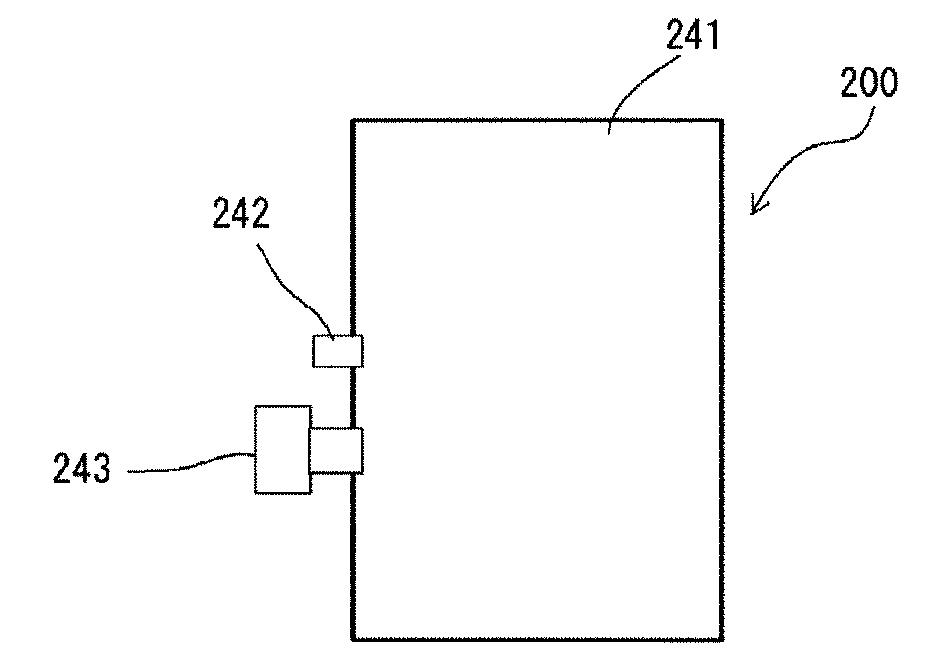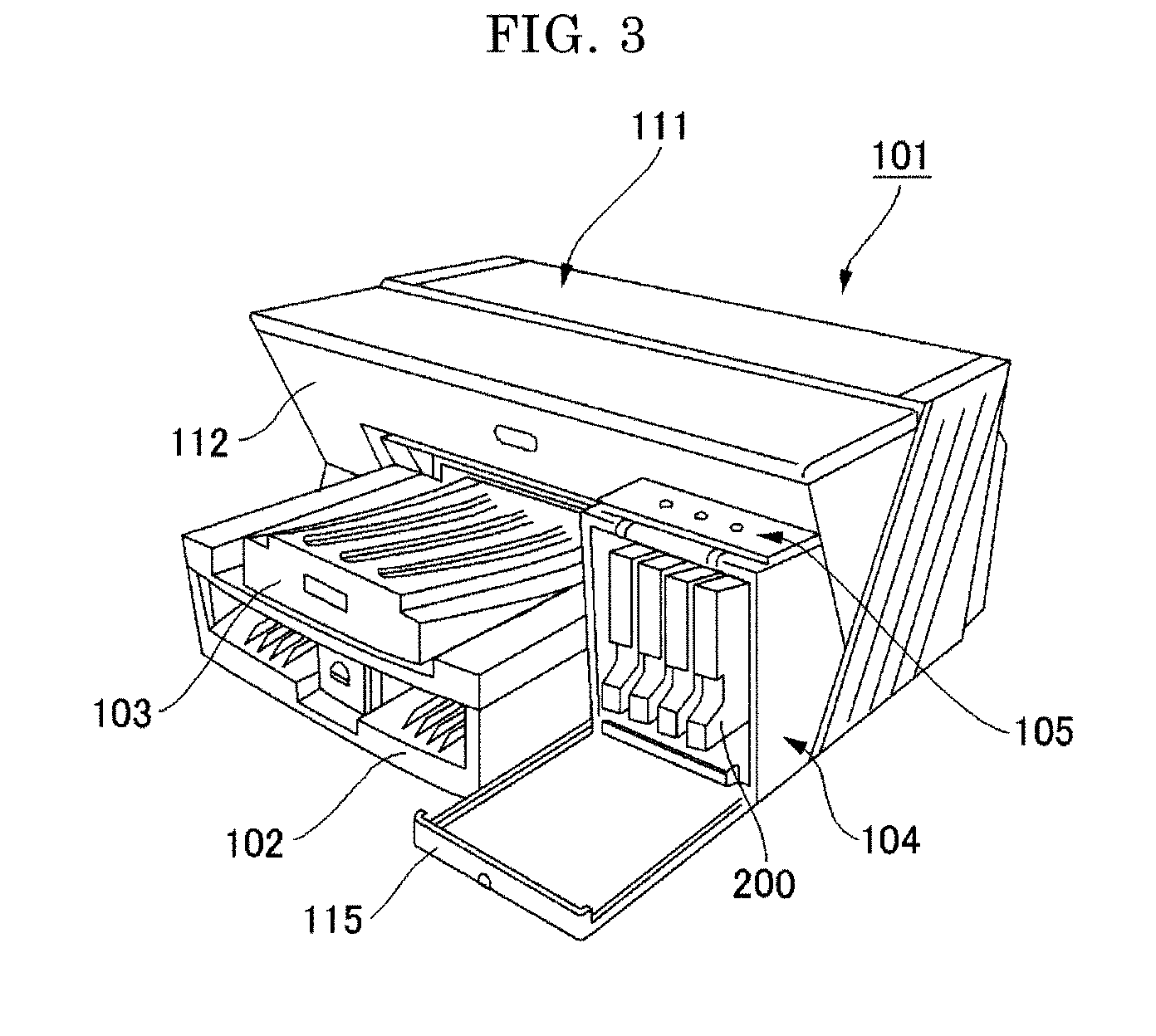However, since the dye inks are disadvantageous in terms of weatherability and
water resistance, studies on
pigment inks that contain pigments instead of aqueous dyes have been remarkable in recent years, and
pigment inks are put on the market these days.
Unfortunately though, pigment inks still remain more problematic than dye inks in color-developing ability and stability; and along with the improvements in techniques for increasing
image quality, particularly in relation to printers for
office automation, pigment inks have been required to exhibit printing quality, hues,
color saturation, glossiness, storage stability and the like on plain paper that are comparable with those exhibited by dye inks.
Also, in order to reduce
hue errors, toning is often carried out, in which case the
color saturation inevitably decreases, thereby causing a problem with printing quality.
For instance,
Patent Literature 1 proposes a cyan pigment having a
hue in the same color
gamut as that of a cyan dye, by employing a
phthalocyanine pigment with a specific
crystal structure; however, not all requirements are satisfied, as there are problems concerning costs, etc.
However, pigment-containing inks which have satisfactory printing properties on plain paper have not yet been obtained in reality.
However, as to printed matter produced using these ink sets, although bleeding on boundaries between colors can be reduced, other printing properties on plain paper still remain unsatisfactory.
However, all these proposals present such a problem that in the case where pigments are used for colorants, the colorants are inferior in
dispersion stability, fixation on
recording media and color-developing ability.
Also, in general, low surface-tension aqueous inks with improved wettability (including the inks of
Patent Literature 5 to
Patent Literature 8) present such a drawback that fluorochemical surfactants used in the inks cause the inks to foam greatly, and thus there are very serious effects on the ink feeding capability and the ejection stability of nozzles.
Use of the paper makes it possible to obtain very
high definition output with high glossiness; on the other hand, since materials for the paper are very expensive and processes of producing the paper are complicated, the production costs of the paper are far higher than those of ordinary glossy
coated paper for commercial printing.
Thus, the use of the paper tends to be limited to cases where high-definition output such as photographic output is needed; and in reality the paper is difficult to use in the field of commercial printing where a great deal of output is required at low costs, for example in the production of handbills, catalogues, pamphlets, etc.
To increase the ink absorbability of media, it is reasonable to increase the thickness of ink receiving
layers (coat
layers); however, the thicker they are, the more expensive the materials therefor are, which leads to a rise in the unit prices of the media.
Thus, in reality, there is no choice but to use large amounts of expensive low refractive-index, high oil-absorbing pigments such as silica or
alumina hydrates, as opposed to inexpensive white pigments such as
calcium carbonate and kaolin.
Meanwhile, when a material which absorbs only a small amount of oil is used, ink absorption is insufficient, and thus beading easily arises.
Accordingly, these days, attempts to achieve a favorable balance between the
refractive index and the whiteness are made by using fine organic particles having a small
refractive index, as disclosed in Patent Literature 11; however, the fine organic particles, too, are high in production cost, and so it is still difficult to obtain inexpensive ink receiving paper which is compatible with dye inks.
Consequently, the amount of ink necessary to output images thereby increases, which not only makes it difficult to miniaturize cartridges but also raises printing costs.
Judging from the above-mentioned points, in ink-jet recording, it is very difficult to provide inexpensive ink-jet paper and a printing method which are capable of high-definition output.
Generally, aqueous pigment inks easily cause
flocculation or
precipitation of pigment particles in comparison with dye inks; in order for the long-term storage stability of the aqueous pigment inks to be comparable with that of dye inks, various dispersion conditions and additives are necessary; also, dispersion stabilizers cause kogation; thus, the aqueous pigment inks are difficult to use with thermal heads, and also there is such a drawback that many of them contain coloring materials which are narrower in color exhibiting range than dyes.
Ink-jet printers using the pigment inks are deemed able to approximate the texture of printed matter to that of printed matter produced by commercial printing because the coloring materials contained in the pigment inks are similar to those contained in ordinary commercial printing inks; however, when
coated paper for commercial printing is actually printed with images or the like using conventional pigment inks, the pigment inks do not dry as quickly as they should, and thus the images or the like bleed, or pigments are not fixed at all after dried, for example; consequently, as in related art, the ink-jet printers are only suitable for printing onto media which have high ink-absorbing properties, such as plain paper and ink-jet paper.
However the
image recording method presents the following problems: the inks are attached in large amounts to the inexpensive general-purpose paper for commercial printing, which necessitates spending a great deal of time in
drying the inks; moreover, in this state where the inks are excessively attached to the printing paper surface, the inks having different colors become adjacent to one another before being absorbed into the printing paper, and thus bleeding between the different colors easily arises.
However, this method is problematic in that the is process of attaching the precoating solution makes operation complicated, and also in that when the precoating solution is attached onto the recording medium, the amount of water attached per unit area of the recording medium is large, which easily causes troubles in conveying the recording medium, such as
curling and cockling.
 Login to View More
Login to View More 


